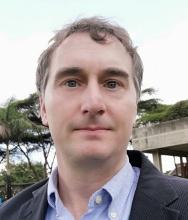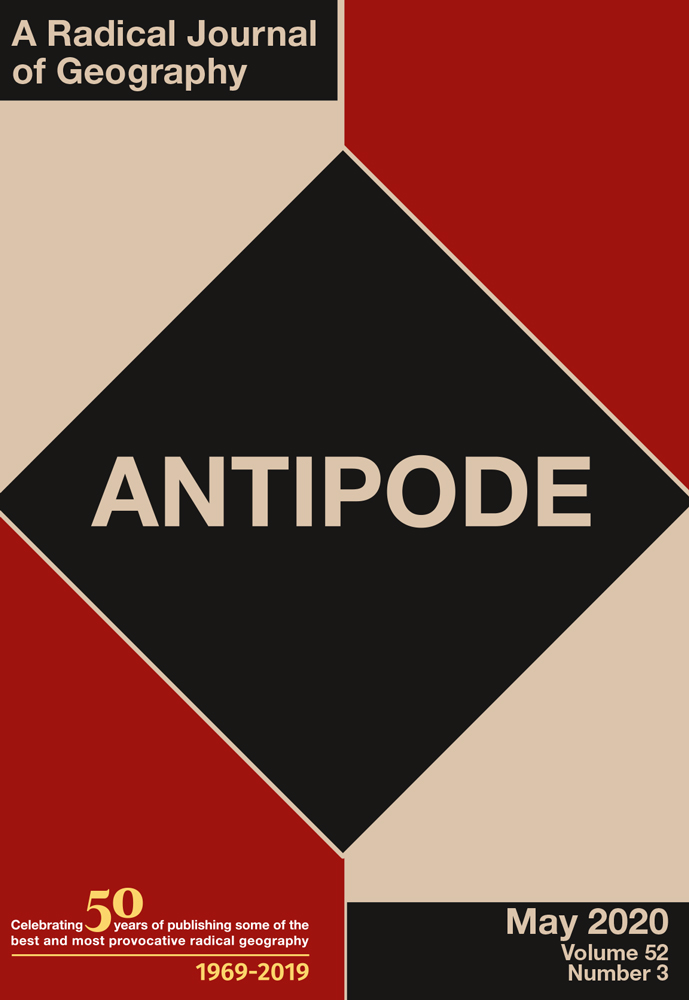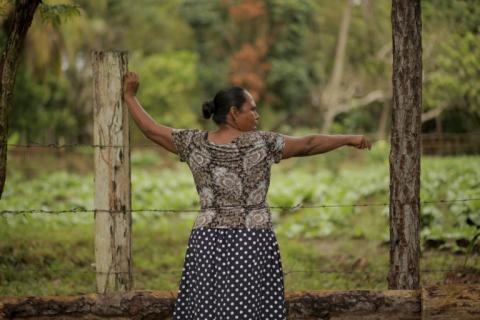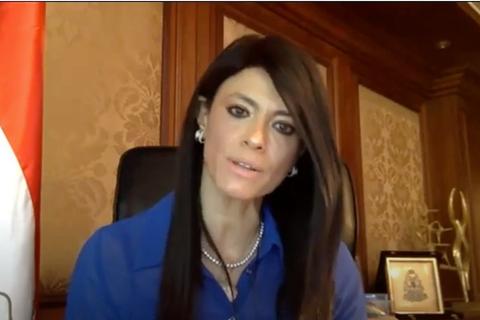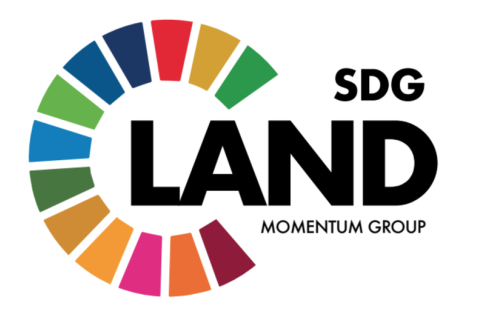Neil Sorensen joined the Land Portal as its Communications Specialist in October 2015. He has extensive experience leading communications for international organizations and developing relationships with civil society, donors, intergovernmental agencies, the media and the private sector. Previously, Neil worked for the International Fund for Agriculture Development (IFAD) as a Governing Bodies Officer and Strategic Adviser to the Secretary of IFAD. He has also led communications for three international organizations, including the International Land Coalition, the International Federation of Agricultural Producers (IFAP) and the International Federation of Organic Agriculture Movements (IFOAM). He holds a Master’s degree in Global Diplomacy from the University of London School of Oriental and African Studies (SOAS) as well as a Bachelor’s degree with a double major in German and Sociology from St. Cloud State University.
Details
Location
Contributions
Displaying 521 - 530 of 1145Towards an open up guide on land governance
This report provides a summary of an online workshop on March 16th 2020, organised in place of a planned fringe meeting of the World Bank Land and Poverty Conference which was cancelled due to the COVID-19 pandemic. The 2-hour digital workshop brought together over 40 participants from across the world to discuss key data and key open data use-cases for land governance. This report is written based on workshop recordings and shared notes.
Hygienisation, Gentrification, and Urban Displacement in Brazil
This article engages recent debates over gentrification and urban displacement in the global South. While researchers increasingly suggest that gentrification is becoming widespread in “Southern” cities, others argue that such analyses overlook important differences in empirical context and privilege EuroAmerican theoretical frameworks.
Antipode: A Radical Journal of Geography
Antipode publishes innovative papers that push at the boundaries of radical geographical thinking. Papers will be rigorous and substantive in theoretical and empirical terms. Authors are encouraged to critique and challenge settled orthodoxies, while engaging the context of intellectual traditions and their particular trajectories. Papers should put new research or critical analyses to work to contribute to strengthening a Left politics broadly defined.
Land and environmental defenders are sitting ducks, while world goes into lockdown
This is a special Earth Day Op-Ed by Michel Forst, the UN special rapporteur on the situation of human rights defenders and Michael Taylor, the Director of the International Land Coalition Secretariat.
Food Security Today Is Not Just For Local Population, But For the Globe: Minister Rania Al Mashat
Egypt’s Minister of International Cooperation Dr. Rania Al Mashat joined a high level virtual panel on the significance of international developmental cooperation to face the implications of the coronavirus pandemic on the agricultural sector and food security.
COVID-19 and the SDGs: moving forward after the crisis
Many governments, businesses and local communities have made commitments towards the Sustainable Development Goals (SDGs) but COVID-19 may set some of these commitments back.
COVID-19 is raging everywhere, resulting in much of the world in self-isolation and the closing of borders worldwide. With comparisons to the 1918 H1N1 influenza pandemic, we are experiencing a literal one-in-100-year event.
Asia-Pacific Off Track: 20% of SDG Indicators Predicted to be Worse in 2030
By Catherine Benson Wahlén, Thematic Expert for Human Development, Human Settlements and Sustainable Development (US)
Sustainable Forests and Reaching the SDGs
Whether from the emergence of infectious diseases, the growing risks to global food systems, or from the increasing variability in global climate and local weather patterns, it is evident that we urgently need to rebalance our relationship with nature. Our relationship with forests is a prime example.
Forests are among the most biodiverse of Earth’s ecosystems. They sequester carbon and help to mitigate against climate change. They protect watersheds and help to control soil erosion. And yet, around 11% of carbon dioxide emissions come from deforestation and forest degradation, which is second only to the energy sector.
The 21st of March was the International Day of Forests, and it convened under the theme of forests and biodiversity. This is fitting in 2020, the beginning of a critical decade for the planet. There will be landmark moments early in the decade, including the anticipated adoption of a new post-2020 global biodiversity framework.
The United Nations Environment Programme World Conservation Monitoring Centre (UNEP-WCMC) is a Centre of global excellence in biodiversity. Over the past 10 years, we have been closely involved with REDD+, an initiative under the climate change convention (UNFCCC) that aims to support developing countries to reduce emissions from deforestation and forest degradation, and to promote the conservation, sustainable management and restoration of forests. Working closely with the UN-REDD Programme, we help countries to plan for and access results-based payments for these actions.
In work led by UNEP-WCMC, the UN-REDD Programme has supported over 20 developing countries to analyze where REDD+ actions could result in multiple benefits beyond carbon. Through spatial analyses carried out in close collaboration with national partners, countries have been empowered to identify areas that have potential for forest conservation, restoration and sustainable management, and can also help secure a range of additional important benefits for people and planet.
These analyses have shown how sustainable forest practices across the planet can contribute to a wide range of the Sustainable Development Goals.
One such example is Costa Rica. The National REDD+ Secretariat, together with FONAFIFO (the country’s National Forestry Financing Fund) and the UN-REDD Programme used spatial analyses to explore where REDD+ actions could help secure benefits beyond carbon, such as enhanced water regulation to support communities vulnerable to water stress, the potential for socio-economic improvements from forest-dependent livelihoods, and from ecotourism.
The work emphasized areas of overlap between the National REDD+ Strategy and spatial priorities for Costa Rica’s other objectives, such as national development, restoration and biodiversity conservation. Considering these benefits when planning and implementing REDD+ will help progress towards SDGs 1 (No Poverty); 6 (Clean Water and Sanitation); 13 (Climate Action); and 15 (Life on Land), among others.
More recently, this work also featured in the development of Costa Rica’s Gender Action Plan (contributing to SDG 5 on Gender Equality). Spatial layers showing the proportion of women by district contributed additional insight and helped to highlight districts where women could act as conservation agents, support efforts to reduce forest fires, and undertake reforestation activities.
Another example is Côte d’Ivoire, where we collaborated with the country’s REDD+ Permanent Executive Secretariat and the Swiss Scientific Research Centre to develop a forest restoration opportunities map. This combined potential benefits, such as carbon density, soil erosion risk and species richness, with obstacles to forest restoration, such as infrastructure development and high human land use. The resulting map shows areas with higher potential and lower obstacles, and thus where forest restoration could be most effective and have the most positive impacts. This could include contributing to SDGs such as SDG 6 (Clean Water and Sanitation), 13 (Climate Action), and 15 (Life on Land).
This type of analysis can identify where agroforestry actions are feasible to guide implementation of Côte d’Ivoire’s National REDD+ Strategy, promoting the use of agroforestry to strengthen agricultural systems’ resilience to climate change, and to diversify incomes for farmers. There is also an opportunity to align REDD+ and private sector cocoa initiatives, with the potential to create more incentives for smallholder farmers and contribute to SDG 12 (Responsible Consumption and Production), among others.
Meanwhile in Viet Nam, lessons from the National REDD+ Programme are informing the development of a deforestation-free jurisdiction in the Central Highlands. This region is at the forefront of efforts to conserve natural forests and other biodiversity, while sustaining production of high-value crops like coffee. Both nationally and locally, partners are seeking to promote sustainable land management and pilot a deforestation-free approach in the region in support of SDGs 13 (Climate Action) and 15 (Life on Land).
These individual examples give us just a snapshot of how retaining, restoring and sustainably managing our forests can help achieve a wide variety of SDGs and bring a range of benefits for people and for nature. As this year’s International Day of Forests slogan put it, our forests are too precious to lose.
More information is available here.
Cadasta Foundation Signs onto the NGO Climate Compact with Commitments toward Environmental Action and Sustainability
Cadasta Foundation is celebrating the 50th Anniversary of Earth Day by signing onto Interaction Forum’s NGO Climate Compact: Commitments Toward Environmental Action and Sustainability.
The NGO Climate Compact represents a pledge by over 75 non-governmental organizations’ CEOs to urgently address climate change and our recognition that the environment is central to achieving our missions to serve the world’s poorest and most vulnerable.
Webinar: Land in the SDGs: Why Reporting Matters and How Civil Society Can Get Involved
This webinar aims to: (1) promote understanding of the role CSOs can play in monitoring the progress of SDG land targets; (2) Introduce formats developed by the SDG Land Momentum Group on parallel reporting to ILC members and the land community; (3) Encourage CSOs and other stakeholders to report on progress on the implementation of SDG land targets.
WHAT YOU WILL LEARN

